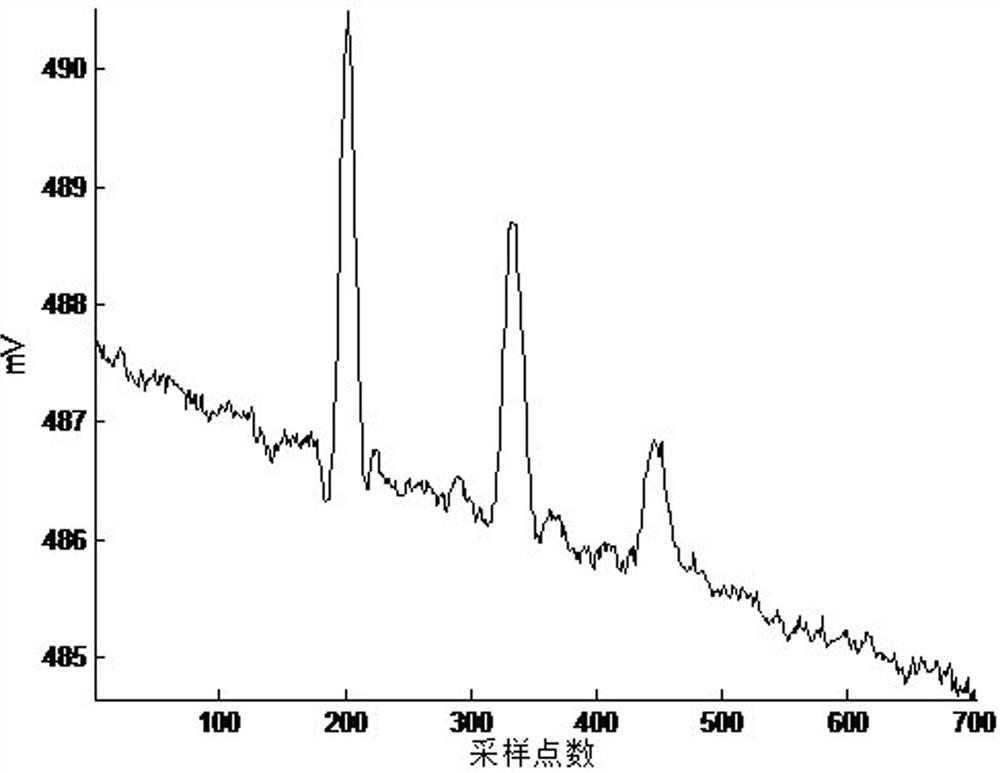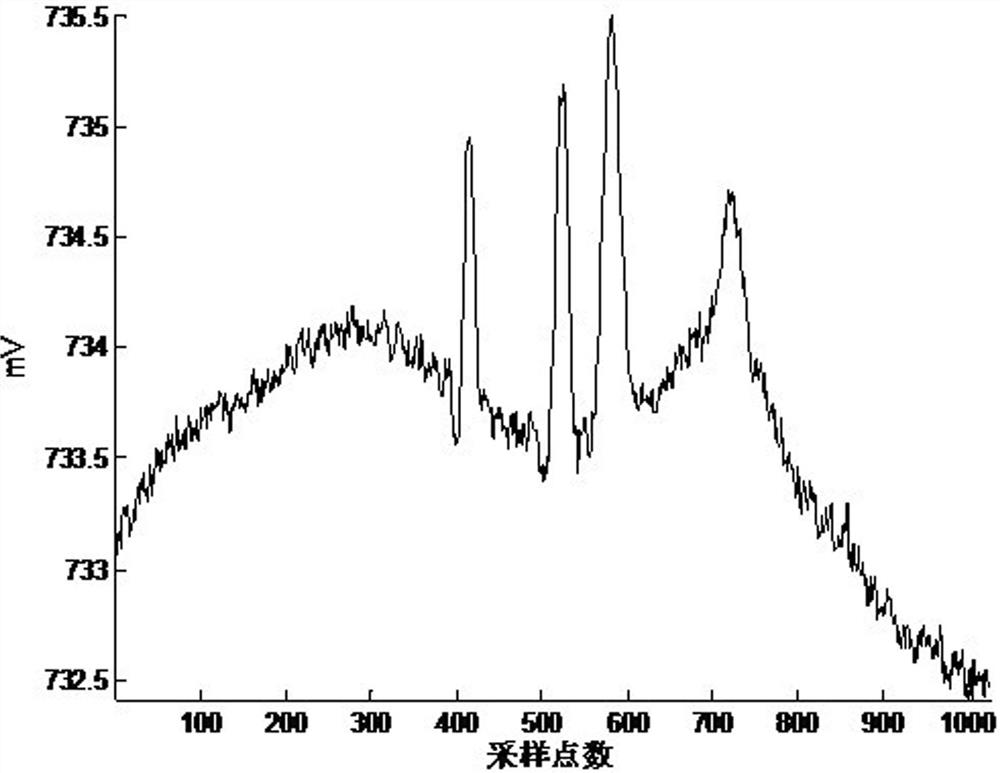Signal denoising method of microfluidic chip based on double threshold of energy element
A microfluidic chip, threshold denoising technology, applied in the recognition of patterns in signals, instruments, calculations, etc., can solve the problems of Gibbs phenomenon, affecting signal accuracy, easy loss of high-frequency information of signals, etc., to suppress false The effect of Gibbs phenomenon, effective noise removal, and improved accuracy
- Summary
- Abstract
- Description
- Claims
- Application Information
AI Technical Summary
Problems solved by technology
Method used
Image
Examples
Embodiment 1
[0054] Such as figure 1 As shown, a microfluidic chip signal denoising method based on energy element double threshold, including the following steps:
[0055] 1. First, according to the characteristics of the actually collected microfluidic chip signal and the denoising effect of the simulated microfluidic chip signal, the wavelet base and decomposition level are selected, and the discrete stationary wavelet transform is performed to obtain the wavelet coefficients.
[0056] 2. Convert wavelet coefficients to wavelet coefficient energy elements, including the following steps:
[0057] (1) Amplitude stretching is performed on the wavelet coefficients after wavelet transformation. Before each wavelet coefficient is converted into wavelet coefficient energy elements, the wavelet coefficients need to be amplitude stretched to meet the premise of energy element conversion. The mathematical formula for amplitude stretching of wavelet coefficients is:
[0058]
[0059] In the ...
PUM
 Login to View More
Login to View More Abstract
Description
Claims
Application Information
 Login to View More
Login to View More - Generate Ideas
- Intellectual Property
- Life Sciences
- Materials
- Tech Scout
- Unparalleled Data Quality
- Higher Quality Content
- 60% Fewer Hallucinations
Browse by: Latest US Patents, China's latest patents, Technical Efficacy Thesaurus, Application Domain, Technology Topic, Popular Technical Reports.
© 2025 PatSnap. All rights reserved.Legal|Privacy policy|Modern Slavery Act Transparency Statement|Sitemap|About US| Contact US: help@patsnap.com



